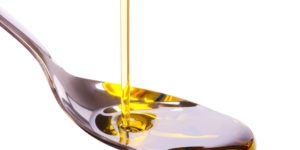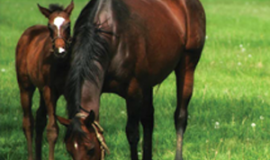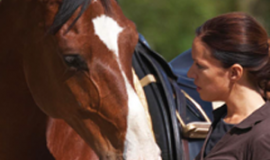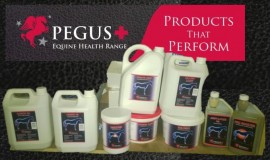There is a long tradition of using grains and cereal-based concentrates, especially those derived from oats and barley, in horse rations. Such ingredients are commonly an important part of rations for work horses and horses in training, since these have increased demands for energy which are difficult to meet from forage alone. Oats are commonly fed whole or crushed, while barley and other grains are main ingredients in concentrate mixtures, whether in the form of pellets/nuts or muesli/mix.

The distinctive thing about grains is that they contain about 50% starch and it is this starch that is the energy-rich part of the grain. Generally, we expect grain and grain-based feed mixtures to contain about twice as much energy per kilogram as dry forages (i.e. hay). Compared with forage or silage, which contain substantive amounts of water, the food value of grain, which usually has a water content of 15%, is even greater. When comparing energy contents of feeds always remember to adjust to the same water content first. The most energy-rich ingredient we can add to the rations of horses is fat (e.g. vegetable oil). Fat gives almost 3 times more energy per kilo than corn, but cannot be used in large quantities due to limitations of digestion and absorption.
When the horse’s ration is predominantly forage, much of the digestion occurs in the hind gut (caecum and colon) after the feed has passed through the stomach and small intestine. Here the finely chewed plant fibres are degraded (fermented) by microbes. This fermentation produces water-soluble fatty acids, mainly acetic and propionic acid. These are absorbed easily through the intestinal wall and give the horse a steady supply of nutrients to be used as energy for work and for the production of milk or foetus.
When we give the horse a starch-rich diet (a high proportion of grain and concentrate mixtures), a large part of that starch is digested in the small intestine. The starch is broken down by enzymes in the intestines into sugars (glucose) that are transported from the intestinal contents into the blood. This leads to an increase in the horse’s blood sugar level. The horse’s pancreas secretes the hormone insulin to regulate blood sugar concentration, and to ensure that the absorbed glucose is used directly for energy when needed or else stored as glycogen in liver and muscles and as fat in adipose tissue.
When horses are fed a lot of starch-rich concentrate, blood glucose may rise substantially in spite of increased insulin secretion. They may then easily become “hot-tempered” and some horses may be difficult to control. However, this varies widely. It is not proven that one particular type of starch, e.g. from oats, is more likely to make a horse “hot” than another type of starch, such as from barley. Most often, it is the amount they are fed that is decisive.
If horses in training have days off, without their rations being reduced, they can easily develop muscle problems resulting in stiffness, “tying up”, or the more serious condition of muscle degeneration (myoglobinuria). Always remember that horses who work or exercise hard should receive a reduced concentrate volume on days off, usually about half the amount they receive in the days of training. Horses that are susceptible to these problems should preferably exercise lightly, even on their off days.
When horses receive a large amount of concentrate in one meal, a portion of the starch passes through the small intestine without being absorbed and thus comes into the large intestines. Here, the starch is utilized rapidly by the intestinal flora and the fermentation can lead to a fall in pH, making the environment in the gut more acidic, and thus less favourable for the digestion of fibre. In addition, it may create other imbalances that, in severe cases, can lead to colic or laminitis.
A horse in hard training, as mentioned above, will eat quite a lot of feed, and it is important that the concentrates given are distributed over the course of several meals. A common rule of thumb is that a single meal should not contain more than 1.5 grams of starch per kilogram of the horse’s body weight. A horse of 500 kg should therefore not receive more than 750 grams of starch per meal. Consequently, 1,5 kilos of concentrate would be equivalent to the upper recommended amount of starch to be given in one meal.
As mentioned, the most important concern when feeding a high proportion of starch-rich concentrate in your rations is to monitor the amount of starch that the horse receives in every single meal. In our Pegus PC-Horse program, we certainly include starch as a factor in our feed-calculator. For this to be meaningful, it is important that you use the program’s function for allocation of the daily ration into meals. Then the program will calculate the amount of starch per meal and warn if the amounts exceed the recommended intake of 750 grams per meal. This way, you can easily monitor and correct the ration or the number of meals so that the risk of illness or adverse side effects is minimized.
For more advise on formulation for your horses diet contact info@pegus.ie
This article was originally written by Dr. Day Austbø.








